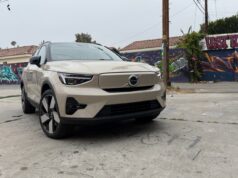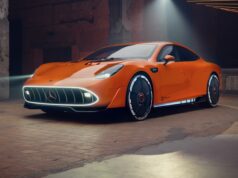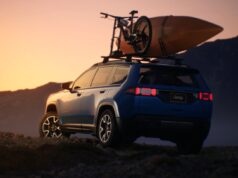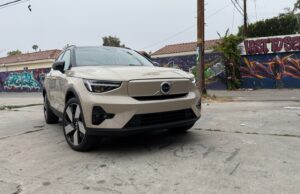Luxury automakers are even throwing their hat in the ring, with BMW and Mercedes-Benz being the two latest luxury brands to enter the segment with the BMW i3 and Mercedes-Benz B-Class Electric. Both the i3 and B-Class Electric have similar prices and even driving ranges that are close (if you don’t buy the i3 with the range extender). Which one is better?
It seems like every automaker is finally jumping on the electric bandwagon, which will give buyers other options besides the best-selling Nissan Leaf. Luxury automakers are even throwing their hat in the ring, with BMW and Mercedes-Benz being the two latest luxury brands to enter the segment with the BMW i3 and Mercedes-Benz B-Class Electric Drive. Both the i3 and B-Class Electric Drive have similar prices and even driving ranges that are close (if you don’t buy the i3 with the range extender). Which one is better?

Styling: Winner BMW i3
The BMW i3 is a clean sheet design that looks like no other car on the road. It’s tall upright layout sits taller than competitors like the Nissan Leaf and other touches like its suicide doors and two-tone paint scheme make it stand out. The Mercedes-Benz B-Class Electric Drive is at the other end of the spectrum with an exterior that doesn’t say “hey look at me.” It’s styling is conservative and clean, but also easily forgotten. Either way, during my week of testing the i3 against the B-Class Electric, the i3 was the vehicle that got the most looks and questions, while most people just thought the B-Class Electric was a small minivan.
Acceleration: Winner BMW i3
The BMW i3 is powered by a 170 horsepower electric motor, while the B-Class Electric Drive gets a slightly more powerful 177 horsepower electric motor. But even with slightly more power, the B-Class Electric’s biggest downfall is its weight. At 3,900 pounds, the B-Class has a significant weight disadvantage over the lighter i3, which comes in at 2,634 pounds. Since the i3 is lighter, it feels a lot zipper than the more relaxed B-Class Electric. Pushing the pedal to the floor in the i3 gives a feeling of being on a roller coaster as your back pushes into the seat, but in the B-Class that feeling is completely missing. On paper the i3 will reach 60 mph in 7.0 seconds, while the B-Class Electric is almost a second slower at 7.9 seconds.
Interior Comfort: Tie
If styling ranks high for you, you’ll likely be impressed with the interior styling of the i3, with its bamboo dash, exposed carbon fiber and dual digital screens. But if interior space is more of a priority, then the B-Class Electric will win you over. The i3’s interior is like no other car on the road with its free standing screens, the sculpted bamboo on the dash and the carbon fiber on the doors and dash. It’s great to look at, but the i3’s biggest downfall is back seat space, well at least compared to the B-Class Electric. The B-Class Electric’s conservatively styled interior won’t spark many conversations, but it is more comfortable than the i3. Also thanks to the traditional rear doors, your rear seat passengers will also be able to get in easier. And once they get in the back seat, they may even like the rear-seat mounted folding tables that make you feel like you’re riding in an airplane. Lastly the B-Class Electric has room for five passengers, while the i3 only fits four.
Electric Range: Winner BMW i3
The i3 without the range extender will be able to travel at least 81 miles between charges, while the B-Class Electric Drive will go slightly further at 85 miles. While their ranges are similar, there’s one big difference that will likely make the i3 the easier vehicle to live with. Currently the B-Class Electric isn’t available with a DC Fast Charger, while the i3 is. What does that mean? If you plug into a DC Fast Charging station you can charge the battery up to 80% in a mere 20 minutes. The B-Class Electric does not have this, so the fastest you can charge it is in four hours on a Level 2 charger. This may not be a big deal if you have a charger at home or don’t travel very far, but the DC fast charger makes living with an electric car so much easier. The B-Class Electric is expected to get the DC Fast Charger, but as of right now, Mercedes-Benz has not announced when. Also don’t forget that the i3 is available with a small gas range extender engine that increases the i3’s total range to around 150 miles.
Driving comfort: Winner Mercedes-Benz B-Class Electric
While the i3 is lighter and more fun to drive than the B-Class Electric, it’s not as comfortable to drive. Los Angeles is plagued with tire killing pot holes, which easily throw the light i3 off its intended path. It’s skinny tires and light weight are no match for rough road conditions, so this is where the heavier B-Class Electric Drive wins. The B-Class has a longer wheelbase, more traditional tires and thanks to its heavier weight it feels more solid when the road gets rough. The B-Class Electric has a very relaxed feel and hitting a pot hole won’t throw your passengers around, like what happens in the i3.
So which one wins? It’s not that easy. Most people love the way the i3 looks and thanks to its carbon fiber and bamboo interior and available range extender engine, the i3 is more ground breaking. But which one would be easier to live with everyday? If you don’t have any kids and live in an urban setting, the i3 is easily the better choice, but if you have kids or frequently have more than one other passenger with you, the B-Class Electric Drive could be the better choice.
Base Prices (before available tax incentives):
BMW i3: $42,400
Mercedes-Benz B-Class Electric Drive $42,375














